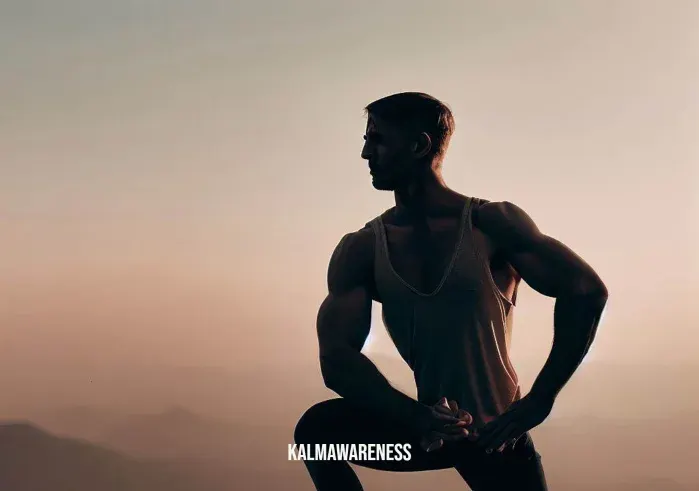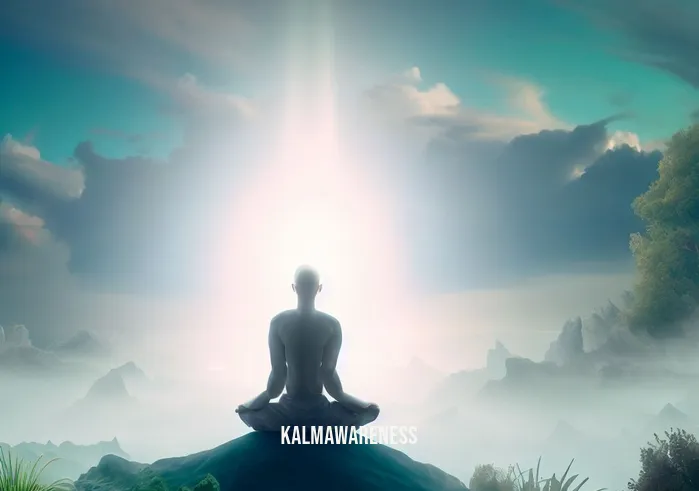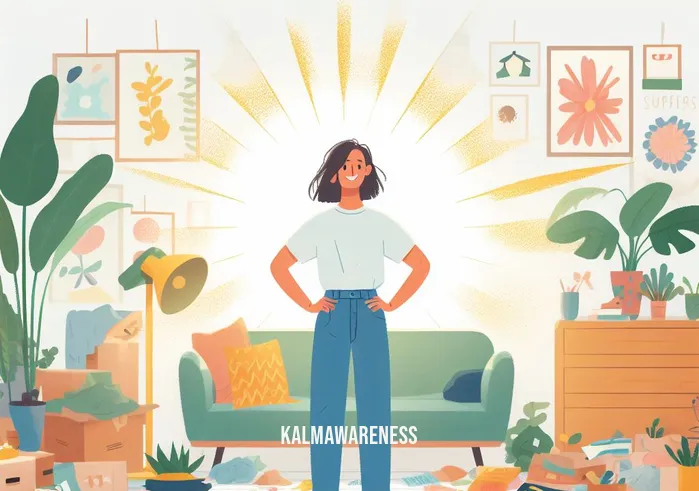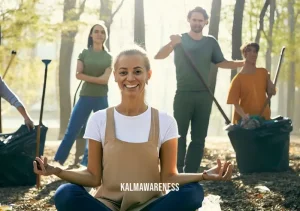Exploring the Half Locust Pose
| Description | Explanation |
|---|---|
| Pose Name | Half Locust Pose Yoga |
| Original Name | Ardha Shalabhasana |
| Difficulty Level | Intermediate |
| Pose Category | Backbend |
| Exercise Duration | For Beginners: 15-30 seconds <br> For Advanced: 30-60 seconds |
The Beauty of Half Locust Pose Yoga
In the grand tapestry of yoga, Half Locust Pose stands out as a true gem. It allows us to embrace our inner strength while opening up the heart and the chest. The pose derives its name from the resemblance of a half locust in mid-flight, symbolizing lightness and grace.
Incorporating Half Locust Pose into your yoga practice not only offers physical benefits but also fosters mental clarity and focus. This dynamic posture is an excellent way to elevate your practice and explore the limitless possibilities of your body.
The Journey to Half Locust Pose
To experience the empowering effects of Half Locust Pose, follow these simple steps:
- Preparation: Lie flat on your belly with your forehead resting on the mat. Place your arms alongside your torso, palms facing up. Extend your legs straight back, allowing them to be hip-width apart.
- Grounding: Engage your pelvic floor muscles while pressing your pubic bone gently into the floor. Lengthen your tailbone towards your heels, maintaining a sense of grounding throughout the pose.
- Inhale and Lift: As you inhale deeply, lift your head, chest, and arms off the floor. Keep your gaze forward and your neck in line with your spine.
- Raise Your Legs: As you continue to inhale, lift one leg off the floor, ensuring it remains straight and strong. Hold it there for a moment before switching to the other leg. Keep your breath steady and controlled.
- Half Locust Soar: With both legs now lifted, feel the energy flowing through your entire body. Keep your abdominal muscles engaged to support your lower back.
- Gaze and Breath: Maintain a steady gaze and continue breathing deeply as you enjoy the sensation of being half locust, soaring through the air.
Remember, this pose might be challenging at first, but with practice and dedication, you will gradually build strength and flexibility to hold it with ease.
The Enchanting Benefits
The Half Locust Pose offers a myriad of benefits that enrich both your physical and mental well-being:
- Strengthened Back Muscles: This pose targets the muscles in your lower back, improving their strength and flexibility.
- Enhanced Posture: As you lift your chest and open your heart, your posture will naturally improve, giving you a sense of confidence and grace.
- Stimulated Abdominal Organs: The compression of the abdominal area in this pose stimulates digestion and helps massage the organs, promoting overall digestive health.
- Improved Focus: Balancing in Half Locust Pose requires concentration and focus, helping to calm the mind and increase mental clarity.
- Increased Vitality: As you open your heart center and lift your legs, you will experience a surge of energy and vitality throughout your body.

Unveiling the Benefits of Half Locust Pose
In the first part of our journey, we delved into the captivating world of Half Locust Pose Yoga, exploring the steps to achieve this empowering posture. Now, as we continue our quest, let us uncover the incredible benefits this pose bestows upon the practitioners, discover who might find it challenging to perform, and explore variations tailored to different levels of experience.
The Marvelous Benefits of Half Locust Pose
Half Locust Pose Yoga offers a plethora of benefits that extend far beyond the physical realm. Let’s explore the magic it brings to your practice:
- Strengthens the Spine: As you lift your head, chest, and legs off the ground, the muscles in your spine are engaged and strengthened, promoting a healthy and flexible back.
- Tones the Buttocks: This pose specifically targets and tones the gluteal muscles, helping to shape and strengthen your buttocks.
- Improves Digestion: The compression of the abdominal area stimulates the digestive organs, aiding in digestion and alleviating digestive issues.
- Boosts Circulation: As you lift and engage various muscle groups, blood circulation is enhanced throughout the body, bringing fresh oxygen and nutrients to the cells.
- Increases Lung Capacity: The expansion of the chest in this posture allows for deeper and fuller breaths, enhancing lung capacity and respiratory function.
- Alleviates Sciatica: Half Locust Pose helps relieve tension and discomfort in the sciatic nerve, reducing pain and promoting overall comfort.
- Elevates Mood: The practice of backbends, like Half Locust Pose, is known to stimulate the nervous system and release endorphins, leading to an uplifted mood and reduced stress.
- Fosters Self-Confidence: Mastering this pose boosts self-confidence, as it requires determination, balance, and focus.
Not Recommended for Everyone
While Half Locust Pose offers an array of benefits, it may not be suitable for everyone. Individuals with the following conditions should approach this pose with caution or avoid it altogether:
- Back Injuries: If you have a recent or chronic back injury, consult with a yoga instructor or healthcare professional before attempting Half Locust Pose.
- Neck Problems: Those with neck issues, such as cervical spine injuries or pain, should refrain from lifting the head during the pose. Instead, they can keep their gaze downwards or use props for support.
- Pregnancy: Pregnant women should avoid practicing Half Locust Pose, as it involves intense pressure on the abdominal area.
- Recent Abdominal Surgery: If you have undergone abdominal surgery recently, avoid this pose until you have fully healed and received medical clearance.
- High Blood Pressure: Individuals with hypertension should practice this pose with caution and avoid lifting the head too high, opting for a more gentle variation.
- Heart Conditions: Those with heart conditions should consult their healthcare provider before attempting this pose, as backbends can put strain on the heart.
Variations for Every Level
Regardless of your experience level, there are variations of Half Locust Pose that cater to your needs and abilities:
- Beginners: If you are new to yoga or still building strength, start with the Half Locust Prep Pose. Lie on your belly and lift one leg at a time while keeping the forehead on the mat.
- Intermediate Practitioners: As you become more comfortable with the pose, try the Half Locust Pose with Hands Clasped. Extend your arms behind your back, interlace your fingers, and lift your arms along with your chest and legs.
- Advanced Yogis: For seasoned practitioners, the Full Locust Pose is an excellent challenge. Extend your arms forward, parallel to the ground, while lifting both legs and chest simultaneously.
- Props Modification: If you find it challenging to lift your chest and legs without straining your back, use a yoga block under your lower ribs for additional support.

Unraveling the History and Spiritual Significance of Half Locust Pose
As we progress further on our journey through the captivating world of yoga, let us dive into the rich history and spiritual significance of the enchanting Half Locust Pose. Delve into the origins of this empowering posture, understand its deeper meaning, and discover tips to optimize your practice and avoid common mistakes.
A Glimpse into the Past
Half Locust Pose, also known as Ardha Shalabhasana, traces its roots back to ancient yoga texts. It finds mention in the classic Hatha Yoga Pradipika, a foundational text on Hatha Yoga dating back to the 15th century. Yogis of old recognized the profound impact of backbends on the body and mind, leading to the inclusion of Half Locust Pose in their practices.
Throughout history, yogis have practiced this pose to awaken their inner strength and embrace the power of the locust, symbolizing transformation, resilience, and renewal. The half variation was introduced to make the pose more accessible to practitioners of different levels, encouraging them to soar to new heights in their yoga journey.
Embracing the Spiritual Significance
Beyond its physical benefits, Half Locust Pose holds spiritual significance that resonates with many practitioners. This backbend encourages heart-opening, allowing individuals to release emotional blockages and embrace vulnerability. As the chest lifts and the heart expands, practitioners can experience a profound sense of self-acceptance and compassion.
The locust, in yogic symbolism, represents transformation and metamorphosis. When we embody the spirit of the locust, we tap into our innate ability to adapt and evolve, shedding old layers and stepping into our full potential.
Tips for Elevating Your Practice
To make the most of your Half Locust Pose experience, consider these tips:
- Warm-up: Prioritize a thorough warm-up, focusing on the spine, hips, and thighs, to prepare your body for this backbending posture.
- Alignment: Pay attention to alignment, ensuring that your pelvis stays grounded and your neck remains neutral throughout the pose.
- Breath Awareness: Maintain steady and controlled breaths as you hold the pose, allowing the breath to flow freely and supporting your movements.
- Mindful Lift: Instead of forcefully lifting your chest and legs, engage your back muscles mindfully to experience the full benefits of the pose.
- Gentle Release: As you exit the pose, release slowly and mindfully to avoid any strain on your lower back.
Avoiding Common Pitfalls
To avoid potential injuries and maximize the benefits of Half Locust Pose, be mindful of these common mistakes:
- Overarching the Neck: Avoid lifting your head too high, as it can strain the neck. Maintain a neutral neck alignment throughout the pose.
- Forcing the Lift: Don’t force the lift of your chest and legs. Instead, engage your back muscles and let the lift happen naturally.
- Neglecting Breath: Don’t hold your breath during the pose. Breathe deeply and rhythmically to stay connected with your body.
- Rushing into Advanced Variations: If you’re a beginner, refrain from attempting advanced variations until you have built sufficient strength and flexibility.
Modifications for Individual Needs
Every body is unique, and modifications can be made to cater to individual needs:
- Injuries: If you have back injuries, consult a yoga instructor for appropriate modifications or opt for the Half Locust Prep Pose.
- Limited Flexibility: Use props, such as blocks or straps, to support your chest and legs if you have limited flexibility.
Complementary Poses
To enhance your practice and deepen the benefits of Half Locust Pose, consider incorporating complementary poses into your routine:
- Cobra Pose (Bhujangasana): This heart-opening pose complements Half Locust Pose and further strengthens the back muscles.
- Bridge Pose (Setu Bandha Sarvangasana): Bridge Pose provides an excellent counter-stretch to the backbend of Half Locust Pose.
- Child’s Pose (Balasana): After practicing backbends, Child’s Pose allows for relaxation and gentle stretching of the back.



![chinese baoding balls _ Image: [Scene: Person with a smile, organized desk with laptop showing improved graph]Image description: Back at the desk, the person smiles confidently, surrounded by an organized workspace. The laptop displays an improved graph, indicating successful progress.](https://kalmawareness.com/wp-content/uploads/2023/09/271_5-300x211.webp)
